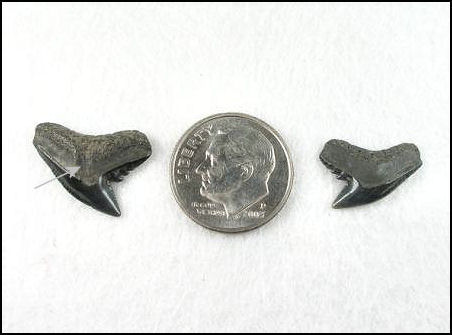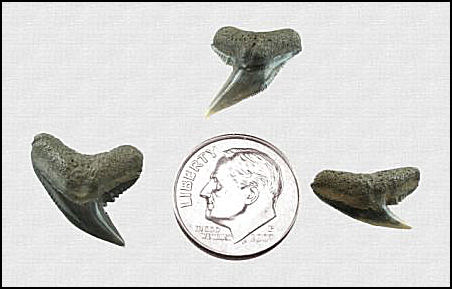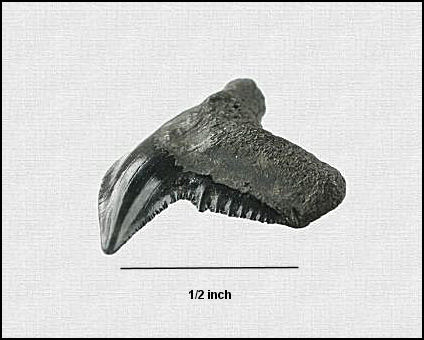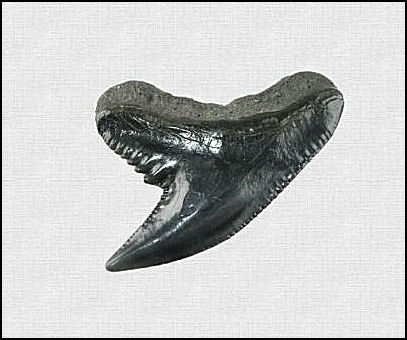|
Longtooth Tiger Shark At one point there was some controversy as to whether Physogaleus contortus was a separate species or simply the lower teeth of Galeocerdo aduncus. The teeth of the these two tiger sharks, both found in NJ, are very similar. The crowns of P. contortus are slender, with a twist to them and have fine serrations which extend almost to the tip. The serrations on the top of the distal side of the crown are medium in coarseness. The root posses a wide shallow nutrient which is very prone to stream wear and a mild lingual protuberance. These teeth average between 3/4 to 1 inch in length and are easily confused with with the other common tiger from NJ Galeocerdo aduncus. Authors note: Physogaleus contortus is still referred to by the old name Galeocerdo contortus in many reference guides and is still commonly referred to as a tiger.
The contortion or twist in the crown is where
Physogaleus contortus
P. contortus
lingual view.
Top - Anterior
The root of
Physogaleus contortus
has a mild
lingual protuberance.
Close up - labial view. |



